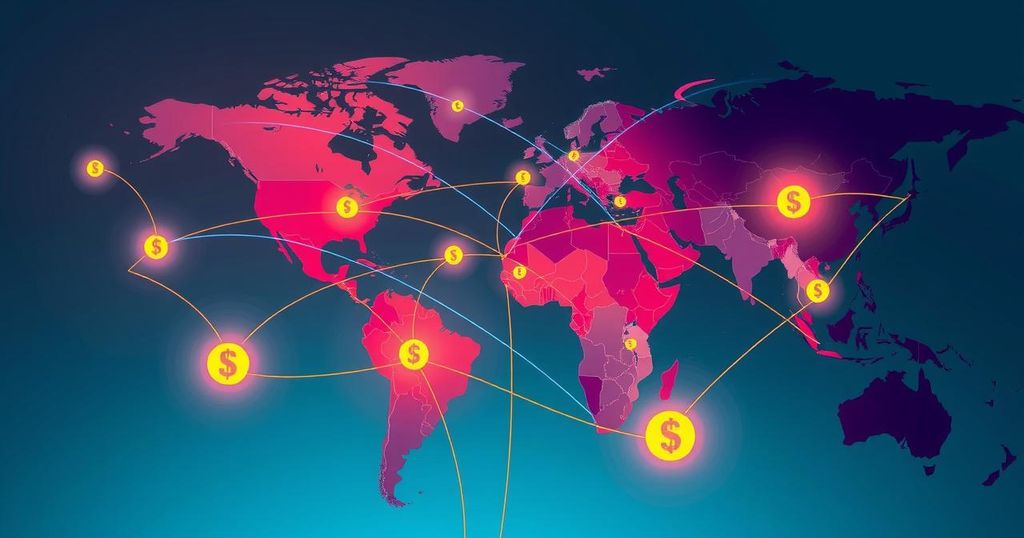World news
AIR FORCE ONE, ASIA, DONALD TRUMP, ECONOMICS, EUROPE, EUROPE/ASIA, FOX BUSINESS, INDIA, INFLATION, KEVIN HASSETT, NATIONAL SECURITY, NORTH AMERICA, POLITICS, PUTIN, REUTERS, RUSSIA, SKY NEWS, TRUMP, U. S, UK, UKRAINE, UNITED STATES, US, US PRESIDENTIAL ELECTION, WHITE HOUSE, YVETTE COOPER
Sofia Rodriguez
0 Comments
U.S. Reciprocal Tariffs and India’s Strategic Trading Relations Ahead of April 2 Deadline
U.S. President Trump plans to introduce reciprocal tariffs on April 2, affecting all countries. This initiative aims to address trade imbalances and bolster U.S. manufacturing. Indian officials are engaging in negotiations for a Bilateral Trade Agreement, aspiring to enhance cooperation and trade access. Concerns regarding economic impacts and tariff negotiations are prevalent as key discussions unfold.
As the April 2 deadline approaches, U.S. President Donald Trump intends to implement a comprehensive reciprocal tariff strategy affecting “all countries,” not just a select few as previously speculated. This strategy is part of his broader goal to recalibrate global trade and enhance U.S. manufacturing, while also raising funds for domestic priorities such as tax cuts and initiatives from his 2024 campaign.
Despite speculation regarding which nations would be specifically targeted, White House economic adviser Kevin Hassett indicated that the tariffs would primarily focus on countries with significant trade imbalances. However, details regarding the tariff structure—such as specific rates, calculations, and exemptions—remain undisclosed.
In response to potential trade disruptions, UK Secretary of State for the Home Department, Yvette Cooper, expressed concern over the negative impact of increased trade barriers on the global economy. The looming threat of a trade war has raised apprehensions about market stability and the possibility of an economic downturn in the U.S.
Trump’s reciprocal tariffs are designed to counteract fees imposed on U.S. exports and have been strategically mandated by a memorandum detailing customized countermeasures for each affected nation. As negotiations continue, India has engaged in discussions with the U.S. on a proposed Bilateral Trade Agreement (BTA) aiming to enhance cooperation and market access between the two nations.
Discussions leading up to the BTA involved identifying priority areas for collaboration, such as reducing tariffs and non-tariff barriers, with the goal of finalizing an initial trade agreement by fall 2025. Both countries aim to double bilateral trade to USD 500 billion by 2030.
The U.S. is advocating for duty concessions in various sectors, while India is expected to seek reductions in labor-intensive industries. Concerns from Indian exporters about the adverse effects of reciprocal tariffs on their competitiveness have led the industry to call for protective measures from their government.
Given the political sensitivities surrounding agriculture and dairy sectors, experts predict India may be reluctant to include these areas in trade negotiations. In contrast, U.S. agricultural exports to India reached USD 1.6 billion in 2024, with significant exports in nuts and apples.
In the same year, Indian exports to the U.S. were diverse, with pharmaceuticals, telecommunications instruments, and precious stones being prominent products. Notably, the ongoing trade relation has resulted in significant bilateral trade—USD 119.71 billion in goods transacted in 2023-24, with the U.S. positioned as India’s largest trading partner.
In conclusion, as the April 2 deadline for reciprocal tariffs approaches, President Trump’s strategy aims to recalibrate trade relations with numerous countries, including India. With ongoing negotiations focused on a Bilateral Trade Agreement, both nations are seeking to enhance cooperation and address tariff concerns. The potential impact of these tariffs raises significant economic uncertainties, potentially affecting key industries on both sides. The outcome of these negotiations will be critical as they may shape the future of U.S.-India trade relations significantly.
Original Source: www.livemint.com




Post Comment